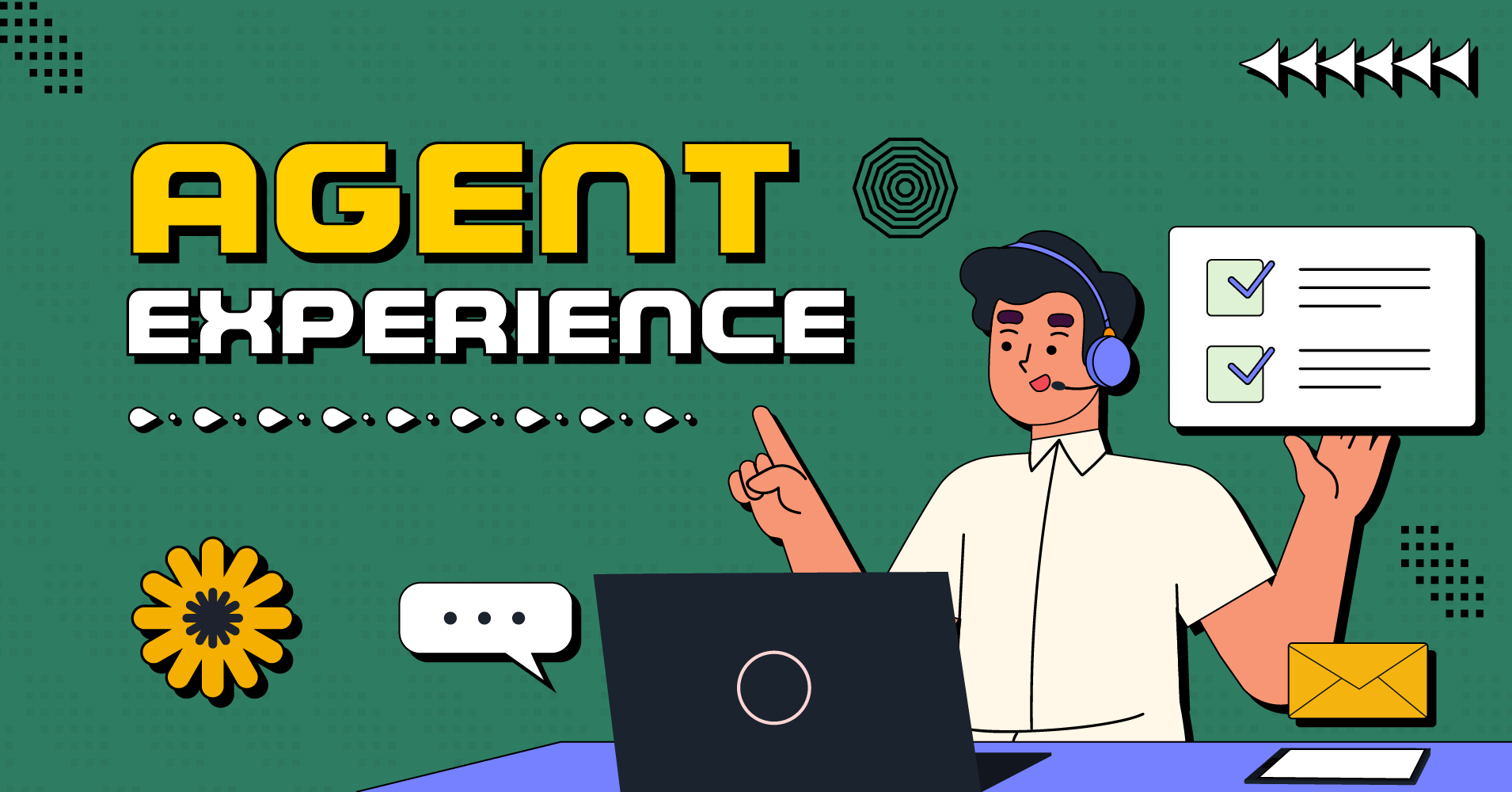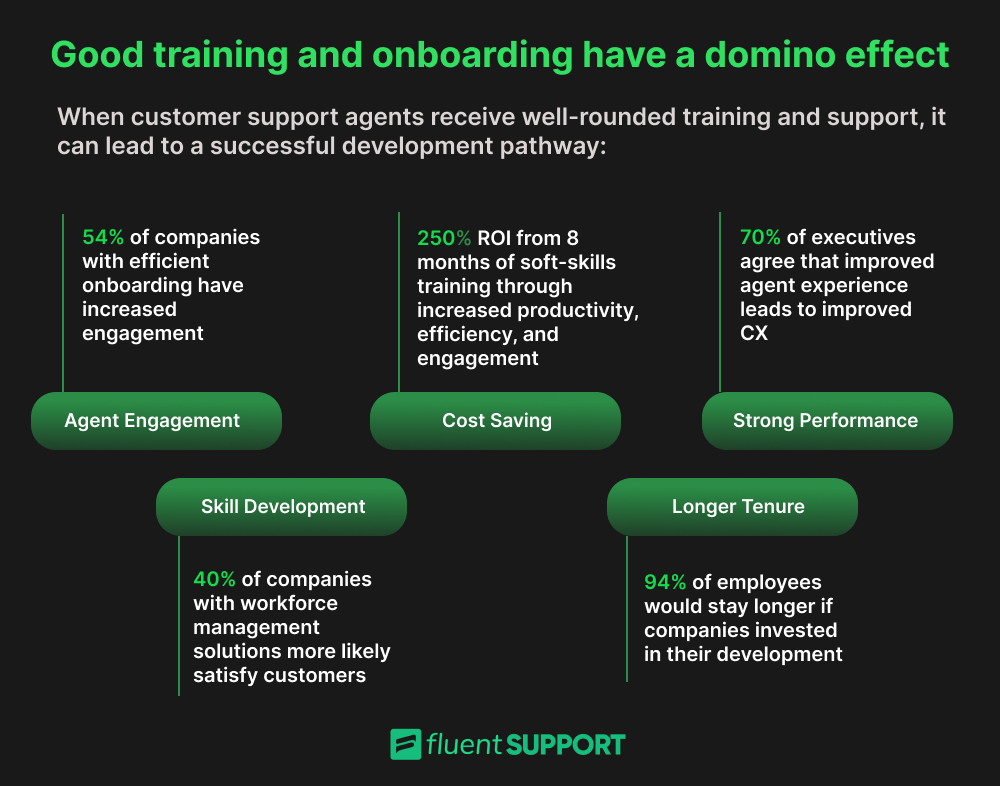
Agent Experience: 5 Simple Steps to Get It Right
By Uttam Kumar Dash
January 9, 2023
Last Modified: November 13, 2025
For businesses, it’s easy to get caught up in the pursuit of customer satisfaction. After all, happy customers are the key to success.
But while it’s essential to focus on the needs of our customers, it’s equally important to prioritize the agent experience who serves them.
Because ultimately, agents’ happiness leads to a better customer satisfaction rate. When agents have the right tools and support, they can provide top-notch service and create a positive experience for everyone involved.
So, let’s shift the focus from customer experience for a few minutes and focus on the agent experience. By considering the needs of both parties, we can create a seamless and satisfying experience for all.
In this blog, we’ll cover the 5 steps to ensure the best agent experience. The steps include meaning, obstacles, metrics, strategies, and future predictions.
What is Agent Experience (AX)?
Agent experience or AX is a term that refers to the various factors that influence the overall experience of support agents.
The factors include:
- The physical environment in which the agent works
- Ease of using the tools
- Continuing workflow
- Mental & emotional well-being
- Morale
- Financial well-being
- Growth
- The experience of performing their job duties
To put it in a simple and straight form these factors we’ve mentioned directly affect,
- How easy it is for a customer support agent to solve tickets.
- The quality of their interactions with their customers.
- How valued do they feel working in the environment as a member of company.
Now, we really need to make things better for the support agents. It is crucial to give them a happier and more effective work environment.
By investing in the agent experience, companies can improve:
- Job satisfaction rate
- Reduce employee turnover
- and Drive business success
Reasons why agents may not have the best experience
Customer support agents might not have the ideal experience if they:
- Lack of resources and assistance
- Suffer poor internal communication
- Receive inadequate training
- Have a heavy schedule
- Don’t feel appreciated
- Don’t get recognized for their contributions
Most of the agents believe that the tools they’re currently using are not supporting them enough to provide the best support.
Even to respond to a single customer query, an agent usually uses various applications. And, if they lack that when needed, it can be a disaster to handle the ticket efficiently.
Another case is that, while speaking with a customer on the phone, agents have to read through lengthy documentation. This can ruin the customer experience in a significant number.
These problems can result in:
- Irritation
- Misunderstandings
- Arguments
- Stress
- Lack of enthusiasm
All of these can be harmful to an agent’s experience at work as a whole. Hence, we must ensure that our support team has sufficient cutting-edge, user-friendly technologies.
5 ways to elevate your Agent Experience (AX)
We now understand the meaning of agent experience. So, you can guess why customer support agents might not have the best work environments.
Here are our top 5 curated ways to make sure that you have set up a better agent experience.

1. Invest in continuous learning and development

“The only thing worse than training your employees and having them leave is not training them and having them stay.”
Henry Ford
Founder, Ford Motor Company
The first way to ensure your agents are equipped to provide top-notch service is by investing in their continuous learning and development. This means providing them with the resources and opportunities.
Multiple researches have shown that ongoing learning and development leads to:
- Improved employee performance
- Job satisfaction
- and Retention rates
This is why more and more organizations are prioritizing ongoing training and development for their employees.
Some ways to invest in continuous learning and development include:
- Offering training programs and workshops.
- Providing access to online courses and educational materials.
2. Implement a robust support system
Support systems are vital for boosting agent experience and customer satisfaction. It can include:
- Providing guidelines and processes for handling customer inquiries.
- Offering resources like knowledge base and FAQs.
- Keeping a separate team of experienced agents available. (To assist with difficult or complex situations)
Moreover, fostering collaboration and sharing best practices among agents can lead to:
- A sense of community within the team
- Improve efficiency
- customer satisfaction
- team morale
Traditionally, customer service teams have operated independently, without any collaboration from other departments. However, from experience, we can tell that a collaborative approach with cross-functional teams can be more effective.
3. Utilize feedback and data to improve processes
Utilizing feedback and data is essential for streamlining customer service procedures. This can be accomplished in several ways.
For example:
- Agent productivity scorecards: These are an excellent tool for raising performance. However, it’s crucial to make sure that they are in line with the appropriate objectives and KPIs.
- Central knowledge base: Agents may respond to customer questions more rapidly by using a central knowledge base.
- Omni-channel reporting: Agents who use real-time omnichannel reporting may observe client interactions across all channels. This will give them the knowledge they need to provide seamless service and spot any problems.
- Agent feedback: Encouraging employees to give feedback on the business and its procedures can assist in boosting overall performance. This showcases a culture of care.
It’s crucial to actively work on implementing adjustments based on this feedback to close the feedback loop.
Customer service challenges can be better tackled by leveraging feedback and data. Based on that agents can modify to provide the best experience for customers.
4. Create a positive and collaborative work culture
The work culture and environment in which agents operate can have a significant impact on their overall job satisfaction.
A positive and collaborative work culture, one that promotes,
- Open communication
- Values diversity and inclusion
- Recognizing and rewarding the top performers
In the past, organizations prioritized individual performance and team competition instead of promoting a collaborative and supportive work culture.
Yet, the benefits of a more positive and collaborative work environment give the best results.
For instance, Zappos is well-known for its company culture and customer service. For its employees, the company places a high value on fostering a positive work environment.
As per the ex-CEO Tony Hsieh, “You’re losing money if your culture isn’t energizing and empowering your employees.”
Zappos has been able to give its employees a more fun and successful work environment by building a solid company culture.
5. Embrace technology to streamline workflows
You can streamline business workflows in various ways, such as by deploying AI solutions, CRM systems, and task automation technologies. These include automated email responses or chatbots that handle FAQs.
By allowing agents to concentrate on more challenging tasks, these tools can increase productivity.
Client Relationship Management (CRM) systems: Enable agents to monitor and update customer information in real-time. It gives them access to all the data they need to serve customers promptly and efficiently.
AI chatbots: Respond to common customer inquiries. It may also evaluate client interactions and pinpoint problem areas, assisting businesses in continually improving their procedures.
How to measure Agent Experience (AX)
There are several ways to measure your agent experience. And, you can enhance it based on the outcome.
1. Establish Key Performance Indicators (KPIs)
Key Performance Indicators known as KPIs are to evaluate the success and efficiency of specific areas. These metrics allow organizations to monitor progress towards set objectives and identify areas in need of improvement.
By regularly reviewing and analyzing the KPIs, companies can make better decisions to enhance the agent experience.
Following are some examples of KPIs you can use to track agent experience:
- Employee satisfaction rates
- Employee turnover rates
- Training and development opportunities
- Workplace culture
- Workload and stress levels
2. Conduct regular surveys and focus groups
Regular agent surveys and focus groups can pinpoint areas to improve your customer service process.
By gathering insights from your agents, you can identify,
- Bottlenecks
- Inefficiencies
And, also other similar pain points that may be impacting your ability to provide top-notch service.
Here’s how you can gather feedback from your agents in a few simple steps:
- Conduct thorough surveys among your agents via the feedback form.
- Take one-on-one interviews with an in-depth conversation.
- provide a suggestion box or channel to anonymously share feedback.
and so on.
After you’ve established KPIs and gathered feedback from your agents through surveys, focus groups, or other means, you should take action on the findings. Finally, monitor the progress and adjust as your company needs to.
The future of agent experience: predictions and trends for the next decade
In the next decade, we can expect to see a shift towards 10x more personalized and efficient experiences. It is for both the customers and agents.
Also, artificial intelligence and automation will play a larger role in handling routine tasks. This will free up agents to focus on more complex issues and provide a more human touch.
Furthermore, the use of virtual and augmented reality for training and support will also likely increase. It will allow for more immersive and interactive learning opportunities for agents. The result? A more knowledgeable and confident team.
Overall, the future of agent experience looks to be one of increased innovation and personalization.
As technology continues to advance, companies need to stay up-to-date and take advantage of these advancements.
Start off with a powerful ticketing system that delivers smooth collaboration right out of the box.












Leave a Reply